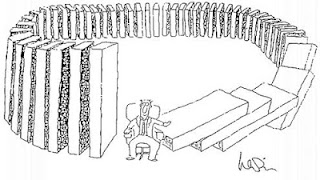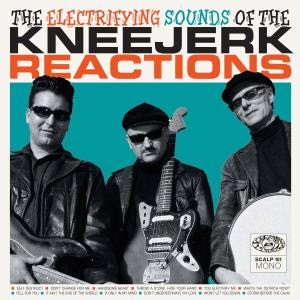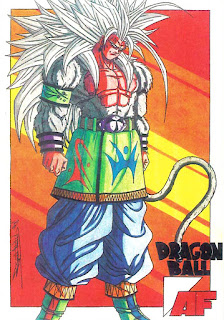With the Bay Area Open 2013 looming about a month away, I have tournament format, structure and scenarios on the brain!
Reecius here from Frontline Gaming to discuss scenario design in tournament 40K.
The Bay Area Open is really what started everything for us at Frontline Gaming. 3 years ago a group of friends that loved going to 40K tournaments decided to throw our hat in the ring and host our own GT, and the event was a great success! It took a lot of time, hard work and money to pull it off, but the end result was an event that was a blast, and it has grown ever since. This year we’ve already sold out for 40K (128 players and a waiting list that grows every day, we are looking at ways to open up more spots), 40 players in the Fantasy event so far, a 40K Team Tournament and 40K Narrative event that continue to grow, plus Warmahordes. Our biggest year yet!
As a team, we’ve since run a LOT of GT level events around the country and many, many RTTs on the local level.
Why am I telling you all this? Just to establish that we have a pretty good idea of how tournaments run due to a lot of experience.
When we put on the first BAO we did something that was considered very avant garde at the time: we ran missions straight out of the book. This has since become much more commonly accepted as a practice, but then people were very concerned that it would have a negative impact on the game. The reason being that in years past, the book scenarios were so poorly designed or imbalanced that TOs HAD to come up with their own stuff. This became accepted practice.
The downside to this though, is that when you open the Pandora’s box that is home brew missions, it is a very short step to playing amateur game designer. When you change one rule, it is tempting to change more, all in the name of establishing better game balance of course….at least that is what the person doing the fiddling often thinks.
The end result is often scenarios or rules “fixes” that have unforeseen consequences and actually create more problems than they sought to fix.
When we decided to run straight book missions in the first BAO it was to totally remove our own personal bias from the scenario building process. It was also because having played in as many tournaments as we did (sometimes one every weekend) we found that the 5th ed book missions were really balanced and fair. Plus, they were what everyone was used to and as such presented as easy transition from playing at home to playing in a tournament.
We also decided to stick with a W/L/D format as that is the way the book missions are designed. It doesn’t allow for the clean math of a straight W/L format, but, playing for a tie is a viable third option and has always been a part of 40K. It also means that you are not out of the hunt if you don’t win a game, which helps to keep players engaged. If you play for a tie in a bad match-up, you can still win the event. It adds tactical depth. Also, when using ELO rankings (which we’re working on) you have to have the ability to tie in your format (as theoretically equally skilled players should tie), so that worked out to be a boon.
It turned out to be a big hit as it allowed the players to focus on playing their opponent instead of trying to figure out some wonky missions with rules they’d never encountered before. The scenario itself faded into the background and the player could direct all of their attention to playing their best game.
The one change we made the second year was to combine multiple missions (at the time 3) into a single mission to mitigate bad match-ups be allowing a player to play to their army’s strengths as opposed to being forced to fight an enemy head-on under unfavorable terms. For example if you were playing Mech Dark Eldar with a boat load of Kill Points against a Draigowing list with 4, it wasn’t so much of a lopsided match. You could focus on taking objectives and let the Draigowing player have KPs.
This also proved to be really popular as it made the scenario more about skillful play and good luck than mission/opponent pairings. However, it still stuck to our motto of playing as closely to the book as possible.
When 6th edition hit, I knee-jerked quite a bit in reaction to what I felt were bad rules and I fell right into the trap of what I had criticized so often: playing amateur game designer. Part of that was because 6th was so new and we had tournaments we HAD to have guidelines up for. The pressure to get something out there overrode our normal, methodical approach to writing tournament guidelines based on experience, feedback and observation.
After acclimating to 6th ed and realizing that not only was it fine, but that in my opinion it was the best edition of the game yet (and yes with Allies, Fortifications and Double FOC–although I still hate random charge length! hah). We decided to go with our tried and true format but adapted to 6th ed. This time, instead of playing only a single scenario with different deployments (which could lead to predictable tactics and lists) we listened to player feedback and ran the missions in pairs to increase variety in both list building and tactics.
Every book mission is represented (yes, even the Relic) as well as every deployment (yes, even Hammer and Anvil). The nice thing about running two scenarios simultaneously is that it means players still know what to expect at our event and can play their best game, but they also have the tactical depth to be able to play through a bad match-up by focusing on which aspects of the scenario they can win and playing for a tie or mitigating losses on aspects of the scenario for which they are in a disadvantageous position.
We feel that this is the best version of our system yet. A player can come in off the street, so to speak, and pick up our tournament packet, glance over it, and instinctively know what to do with only minor if any explanation needed. Now when you pull that Relic Mission, it isn’t so good or bad for you (depending on your list) as there is a second mission to mitigate it’s impact. It also means we are minimizing our impact on the game as TOs and allow the players to play 40K as they know it.
The BAO will be our 4th GT run in this system in 6th ed, and we feel that the feedback from players, fine-tuning and practice we’ve put into at our store (we have run through the scenarios many dozens of times in practice to iron out the kinks) have gotten it to the point where it runs quite smoothly and is a lot of fun. Keeping it simple, close to the book and tactically flexible to benefit the better player seems to be the recipe for success.
What do you all look for in tournament scenario design?





I like what you have wrote here. I do agree you have to stay as close to the book as possible. So far what I have seen in your battle reports the combining of missions has worked out very well and the players are not stepping into unframiliar territory when they play the mission. Here at the local store they roll up book missions which makes list building kind of fun because you don’t know what the missions are until you get to the store that day. I do have to admit that you can end up with bad matchups with not knowing the mission but you play through them anyways. I was wondering if you could provide me with a BAO packet so we can try it out down here? I would like to come to one of your events in the future and hopefully I can make it to one next year.
Yeah man, we’d love to have you!
You can find the complete tournament packet under the community tab, scroll down to Bay Area Open 2013, and then scroll down to 40K Championships. Feel free to use any of it, we’re not possessive of it at all. Just give a shout out to us if anyone asks where you got it so they know where to get it, too!
Ok thank you! I will be sure to tell them where it came from.
I miss the internet presence of Chaos Wins and the Sprue Posse. That blog had a profound effect on my point of view as an organizer. I didn’t necessarily run events like they did but that philosophy was always in the back of my mind like it appears to be for you guys as well.
They were a HUGE influence on us. We took a ton of what we do from those guys. I wish they were still involved in the hobby, too. All good dudes, super skilled players and they brought some awesome ideas to the tournament scene.
I’m a big fan of this method. I wish Zen would go for it for TSHFT, but them’s the breaks.
I desperately want to get down to the BAO as I have friends and family in Santa Rosa (I know it’s not that close to the event) and could crash there and make it a whole vacation.
Santa Rosa isn’t crazy far, and it would make driving here totally viable!
Yeah, our system isn’t perfect but it’s really good, it is the result of many years of practice and feedback. We are very confident with it, now.
I don’t think mixing 2 mission into 1 is a good idea. I will even go further and say is a very bad idea. I am going into details explaining my self but first i will get into few facts that i am looking at
1. For every game I can earn up to 10pts. In order for me to earn all 10 pts i have to get 2 missions and all 3 2nd from BRB.
2. There are Scenarios where KP and Objective are mix into one.
3. I have the Scenarios beforehand.
explanation: I am here building a list/tactical brainstorming for this event. Solution: In order for me to capture 70pts or maximum my points, the best tactical solution is to table whoever i am playing.
The best way to win a Kill Point mission is to get a Kill Point and keep it in the lead. So end up doing is after I got a kill point up during the game i hide everything. I use distance and terrains to not my enemy to kill anything. So If my enemy want to kill a unit i make sure i get one in return. I am just going to pick one of my units as an example. I will hide my WarWalker in the corner hugging some BIG rock after they kill a rhino. I don’t care if they don’t fire a shot after that. They done their job.
The best way to win a objective mission is to have something stand of top of objectives at the end of the game. So, I have everything in my army to get in the way of his army trying to get to those objectives. I don’t care how many units or points or how many he kills my army as long as i have one more objective. Now the same WarWalker in the same army. I will have him outflank and put him in the back field of my enemy. I make him waste a turn shooting something at the WarWalker or take 16 S6 shots a turn. The purpose of doing that is not to kill a unit of Marines and they can’t but to waste their time so the marines are not moving close to my side of the table. I gain time by putting my units in the right position. They done they job by dying.
Now if u mix those to missions together then each mission strategy CONTRA each other. If I want to win the KP then i give up the objective part of the Scenario vice verse. So, at min i give up 3 points. The same WarWalker this time. If I hide them then i don’t gain time. If i put him in the right position then i gain time but i just lost a KP that i can’t gain back.
So what is losing 3pts really mean. It mean that if i don’t get 10 pts I just lost not against John Doe, i just play, but against Mr Tough guy on the next table that just got 10pts. I just lost a game in the bigger picture “tournament game”. Yes i won 7 games at 7 pts each will not get my a win in the tournament maybe not even 3rd place with 49pts at the end. What i am really playing for is not to win the round but to max out my pts.
So the best Strategy for mix missions is to table or nearly table John Doe. If i design my army to do just that then i will capture the both missions. While the WarWalker is very valuable to me in both missions they are not that valuable to me in a MIX mission. And I can go on and on. another example is 3 DA Marine Bike units. 240pts 3 units of Bikes; in a kp u just hide them in the corner and objective mission you run them at the end of the game and just park them there, one units bound to service if John Doe can only shot at 2 of them. In Mix mission what they going to do? It is better than to take a unit of Termies? Termies can kill, hard to be kill and stand on that one objectives. With that say. BAO just unknowing change the balance of every units in the game. I am sure at the point Reecius can look at it and say ” I just change the roles of the DA bikes and many other units that does the same roles”.
What i am trying to point out here is that just having MIX mission i lost a lot of valuable tactics and strategies. If we talking about amateur game designer then Mix mission is one of the big one. What end up happening is that I design an army that does one thing very well is to table John Doe. I change my focus at the list design and how i play all 7 games. I will put more value to units that can kill and hard to kill and scoring over any “tactic” units.
The way I will play those games then became i will come to “the middle” and lets club each other to death. knowing that what John Doe design his army to table mine and be doing the same. Rather then play the position game the whole game sacrifice what needed and play to the objective or get KP and out position John Doe.
Having MIx mission change the game of 40k in a Major and big way.
I think you may be missing a key point: this isn’t a battle point tournament.
You don’t have to get max points to win. You’re W/L/D record trumps points earned. You can just barely win each mission and win the event.
it is Renaissance Man play for points? If not then yes i am missing a key point. I know there are muti awards but i will hate to miss my chance on one award just because of the scenarios.
Yeah, I think I need to rewrite the outline because if you were confused by it I am sure a lot of folks are. The points are only to determine who won, the system is W/L/D. Points are ONLY for determining ranking within a bracket at the end of the event. Essentially the way we score it is 1,000 points for a win, 500 for a tie, and the points you get during a game (1-10) are for rankings. That way winning the game is what matters, the bonus points only distinguish between players with the same record at the end of the event.
Ig platton is a good example of devalue. In kp. One blob of 50 and in obj is 5 units. What i am going to do in mix?
Haha, too bad? Not trying to be rude, but what do you want, a super unit that can hold 5 objectives but only gives up a single KP? That is asking too much. As a player you have to make the choice to blob up or divide up as the situation demands. It is the same choice Tyranid players have to make with Tervigons.
No u are not rude at all. let me clear up. if we play a book mission then if the mission is KP u blob up and if the mission is obj then u have 5 squads. but in a MIX mission i am not sure i even take a blob. that my point. I play to scenario and a mix scenario calls for different tactical play. I think at that point i prefer 3 plasma vet squads.
And for the Tyranid I might not even bring a tervigons at that point. why bring something that only play 50% of the scenario? I rather have something that can play 100% of the scenario
With Tervigons, in the book missions, 1/6 missions the Tervigon is a liability. In our missions 1/3 missions has KP, but in only 1/6 is it primary. It is the same ratio of bad missions, but in ours, the Tervigons will always be able to take objectives too, making them always useful instead of sometimes terrible.
As with the Blob Squads, they are flexible in our system, and the way you use them may not always be obvious. You have to choose as the player if it will be better to blob or not based on factors in your game at the time.
If your Renaissance Man aka overall is not tie to the battle points then this system works. Having ur 2nd mission on 3 pts with 2nd objectives u can get a win without getting the primary. a smart way to get around a bad match up.
If I only playing one mission and ignore the other one then yes everything back to normal play or close enough. He can go and collect KP while i park on objectives. and at the end see who got more 2nd objective/points to get a win. By doing that, the value of the 2nd objective became a lot more important. so having a 25p Inquisitor as a warlord just got more dangerous. And the all important first blood, looking at u rhino. Having scoring bikes just got better too. With that said, having 2 missions does influence my list and play but not completely change it.
PS i re-read the package many times. beside the w/d/l on each game the rest of them implies you are using battle points. Paint and sport u have a point system why wound Renaissance Man not use the points from the game? The package never said but more assume system.
I will rewrite the rules so that the intent is more clear, thanks for pointing that out.
We do awards a little differently. We have the tournament champ (best W/L/D record, Battle Points as tie breaker), Renaissance Man (best combined paint, sports, W/L/D that hasn’t won something else), and Best Hobbyist. So it is not your traditional scoring system.
Also, we have a tournament up here in which they have pre-determined placement of objectives. What are your thoughts on this?
I’m fine with that. We limit objective placement more than the book does as if you do not, a skilled player can give them self an insane advantage over an unskilled player through objective placement. I’d rather allow players some latitude in objective placement, but fixed objectives doesn’t turn me off.
Yeah, the way objective placement works in 6th I feel the ability to simply put the game out of reach for your opponent is pretty unsporting. I also like fixed objectives in that its one less thing to do before jumping into the game.
Yeah, we agree. We still wanted to allow some latitude to the players, but not the ability to totally own someone just in objective placement.